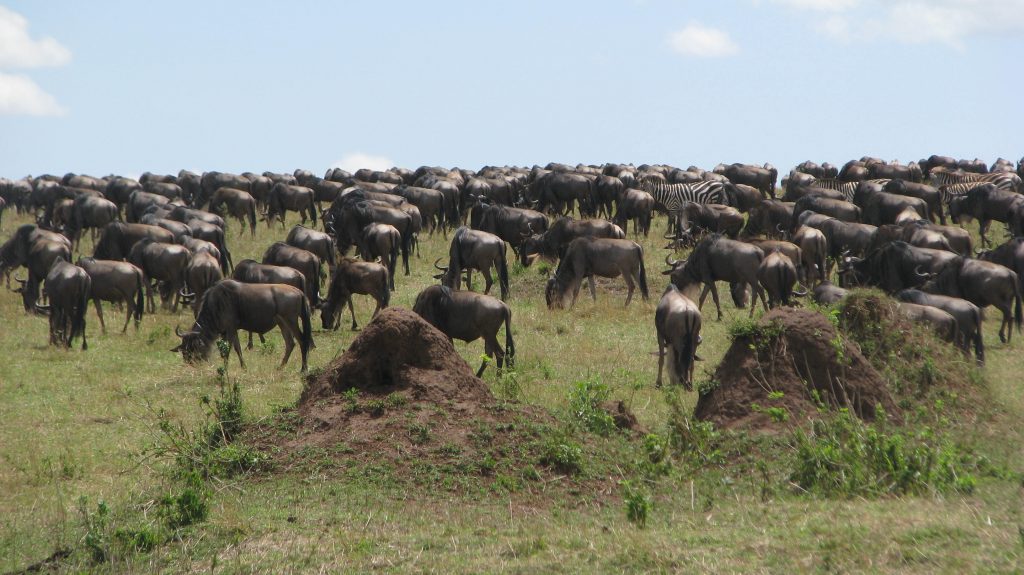The Great Wildebeest Migration in Tanzania is the greatest wonder of the natural world. It’s when mother nature brings over 2 million wildebeest, zebras, and gazelles together. Every year they migrate in a clockwise direction across the Serengeti in Tanzania and the Masai Mara in Kenya. It’s a truly spectacular, amazing event not to miss.

Why is the Wildebeest Migration so popular?
It’s a popular event because you get to spot it only in East Africa, in Tanzania and Kenya. You get to spot millions of wildebeest and many other green pasture animals.
When is the best time to visit and see the Wildebeest Migration?
The Wildebeest Migration is an ongoing event, where the animals migrate in a circular motion around the Serengeti National Park to the Masai Mara in Kenya. The prime time is July to October, and December to March, although other months also have advantages.
July to October: This is the most desirable time to spot the migration in the northern plains of the Serengeti where thousands of wildebeest cross the great Mara River. The migration is in Tanzania.
December to March: This is the best time to see the wildebeest in the southern area of the Serengeti, in the Ndutu area, which borders the Ngorongoro Conservation Area. It’s calving season, and the area is rich in fresh grass.
February: It’s the best time to spot big herds as they always come south for calving season. This is a real highlight of the wildebeest’s journey and a fabulous time to spot the herds congregating on the dramatic sweeping plains of Ndutu. Due to short grass this is the best area to protect themselves and calves from predators during delivery. The area is also rich in minerals like calcium, iron, and phosphorus for the best growth of calves.
November, April, May, and June: These are the months to spot animals in one location in small herds.
November is the short rainy season.
April and May are the longest rainy seasons where grasses are green all over the plain across the Serengeti, especially the southern and eastern Serengeti.
Why do the animals migrate?
Wildebeest, zebra, antelopes, and other animals follow the rain by smelling moisture in the air. They’re seeking greener pastures in order for their calves to survive. But they need to watch out for the many predators as well.
About half a million wildebeest are accompanied by hundreds of thousands of zebras, antelopes, gazelles, and other animals every year across the Mara River to Masai Mara.
The animals follow a clockwise movement through the Serengeti. During the 500 kilometers they travel one way, animals are fraught with danger from many predators such as lions, cheetahs, and crocodiles preying on the animals. Scavenger birds like vultures also follow the migration.
It is a truly amazing spectacle.
Ndutu
Ndutu is located in the Ngorongoro Conservation Area, in the southeastern plains of the Serengeti ecosystem. The plains around Ndutu are the main holding ground for migratory animals where vast herds congregate and linger for more than four months, from December to April, before they start moving across the Serengeti in search of greener pastures and water. The Ndutu area forms an important part of the Serengeti ecosystem, in particular the short grass plains which provide calving grounds for wildebeest and other migratory animals.

